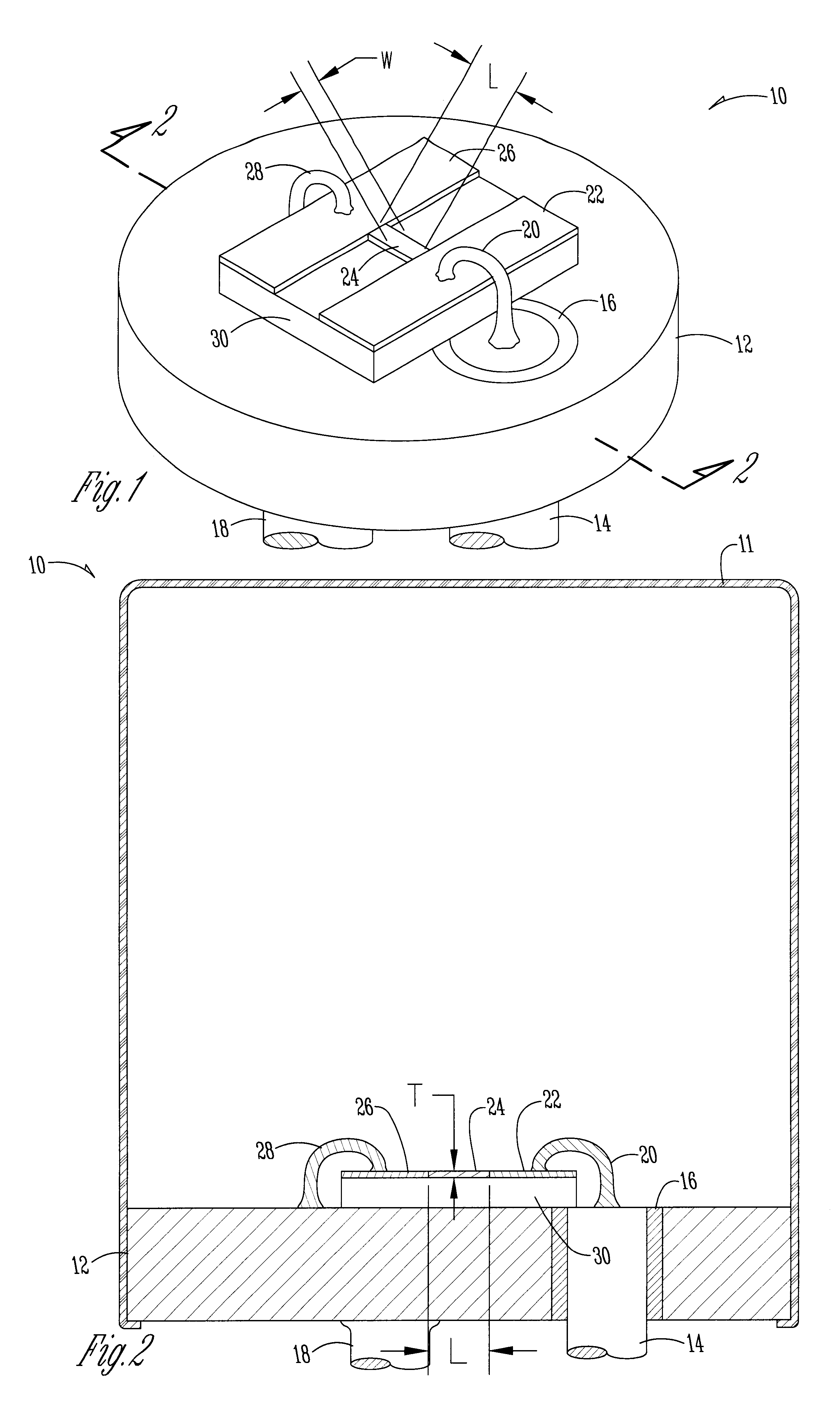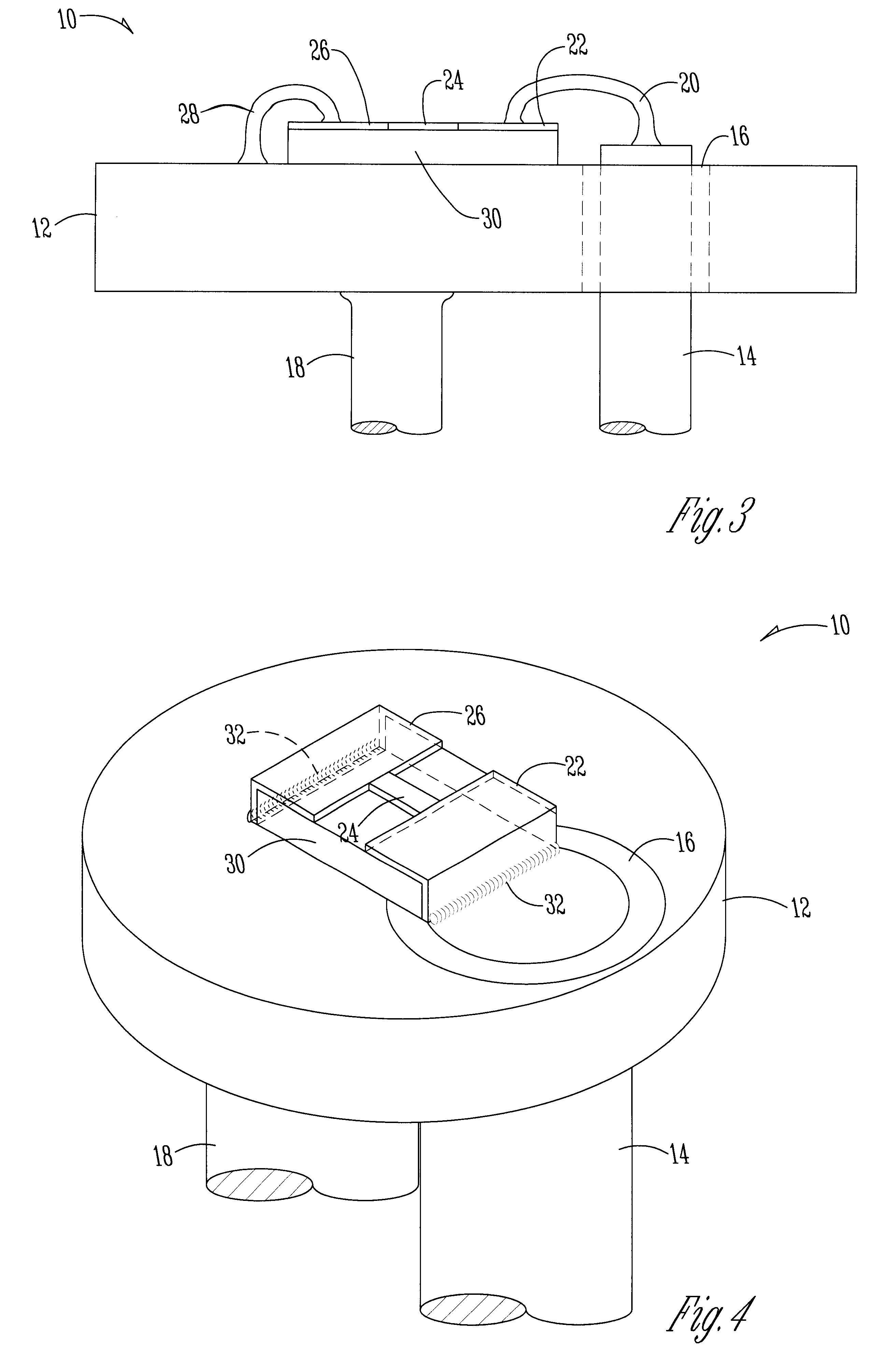Electro-pyrotechnic initiator
a technology of pyrotechnic initiators and initiators, which is applied in the direction of electric fuzes, weapons, ammunition fuzes, etc., can solve the problems of large variation in resistance, large variability in resistance, and prior art initiators that require a relatively large amount of energy to initiate autoignition or become more costly with less reliability, etc., to achieve the effect of small size and lower cos
- Summary
- Abstract
- Description
- Claims
- Application Information
AI Technical Summary
Benefits of technology
Problems solved by technology
Method used
Image
Examples
second embodiment
the present invention is shown in FIG. 3. The only difference between the device in FIG. 3 and that of FIGS. 1-2 is that the first pin 14 extends above the header 12. In the bridgewire technique of the prior art, the top of pin 14 and the surface of glass insulator 16 had to be co-planar with the header 12. The present invention eliminates the need to make the top of the pin and the glass insulator co-planar with the header, greatly reducing the cost to make the electro-pyrotechnic initiator.
FIG. 4 is also very similar to FIGS. 1-3. The only difference is that rather than a standard wire bond, solder 32 is used to electrically connect the bonding pads to the first pin 14 and to the header 12. FIG. 4 shows that the surface mounted foil-resistive strip 24 can be mounted directly to a header 12 that may presently be used for a bridgewire element. There is no retooling required.
FIG. 5 shows a fourth embodiment according to the present invention. The electro-pyrotechnic initiator 110 of ...
fifth embodiment
A fifth embodiment according to the present invention is shown in FIG. 6. The electro-pyrotechnic initiator 210 has a header 212. A first pin 214 runs through the header. The first pin 214 is the electrically isolated from the header 212 by a glass collar similar to item 16 in FIG. 1. The supporting substrate 216 for resistive strip 222 and its terminating end pads 218 and 224 is an insulating material such as epoxy-glass or polyimid. The first pin 214 is electrically coupled to a first solder pad or conduction area 218 by a fillet of solder 220. The first solder pad is electrically connected to the activating resistive strip 222. The resistive strip 222 is a foil resistor. The resistive strip 222 is electrically connected to a second solder pad 224. The second solder pad 224 is electrically connected to a second pin 228 through a fillet of solder 220. The second pin 228 is also electrically isolated from the header 112 by a collar of insulating glass similar to item 16 in FIG. 1. I...
PUM
 Login to View More
Login to View More Abstract
Description
Claims
Application Information
 Login to View More
Login to View More - R&D
- Intellectual Property
- Life Sciences
- Materials
- Tech Scout
- Unparalleled Data Quality
- Higher Quality Content
- 60% Fewer Hallucinations
Browse by: Latest US Patents, China's latest patents, Technical Efficacy Thesaurus, Application Domain, Technology Topic, Popular Technical Reports.
© 2025 PatSnap. All rights reserved.Legal|Privacy policy|Modern Slavery Act Transparency Statement|Sitemap|About US| Contact US: help@patsnap.com



